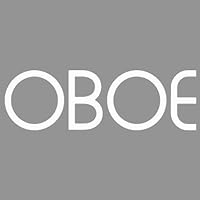In terms of graphic design, one needs a strong and efficient laptop. Graphic designers usually have a lot of work like using heavy applications and working with big files among others. You are required to get the best out of your machine to enhance productivity in the end. This guide gives practical tips for improving performance on graphic design laptops.
The Significance Of Laptop’s Performance In Graphic Design:
Graphic designing is an intensive process that needs many resources. Programs such as Adobe Photoshop or Illustrator, for example, use a CPU with high processing power which means they require at least quad-core processors like Intel® i7; besides this, it should also be equipped with large Random Access Memory (RAM) e.g. 16GBs would do as well having fast storage devices like SSDs too can’t be left out here otherwise if not well catered for workflow efficiency will be compromised directly impacting the quality of output produced eventually missing tight deadlines common within such environments. In 2024, AI integration has played a huge role in shaping the industry and changing how designers work, With Generative AI and Improved performance and rendering speeds AI features such as Windows Co-pilot have changed how we work in today’s age.
Selecting Hardware Specification That is Right For You:
Below are the essential hardware specifications one should be looking out for:
1. Central Processing Unit (CPU):
A multi-core processor works best for graphic design; hence anIntel® Core™ i7 or i9 could serve this purpose since they are capable of handling more than one task simultaneously which is a common occurrence while operating heavy programs AMD Ryzen™ 7 and 9 series would also work nicely due to their clock speeds among other things
2. Graphic Processing Unit (GPU):
To effectively render images and videos graphic designers require dedicated GPUs NVIDIA GeForce GTX or RTX AMD Radeon™ RX series have been found reliable over time not only because. Nvidia RTX Laptops also come with an upgraded AI performance that is optimized for tasks such as animation and Gaming.
3. Memory (RAM):
If you are using design apps on your laptop, this is a major requirement. It stores temporary data that can be quickly accessed.
Therefore, the more space your laptop’s RAM has, the better it will perform. For best results go for not less than 16GB and above 32GB especially if dealing with large files while multitasking so that there are no lags experienced.
4. Storage (SSD)
Compared to traditional hard disk drives (HDDs), Solid State Drives (SSDs) are faster and more reliable. Graphic designers must ensure their SSD has a minimum capacity of 512GB for quick file access and smooth software running.
Optimizing Operating System For Performance :
In the current electronic age, it is essential to get the most out of your operating system.
Below you will find some of the important things you can do to make your OS work better and faster:
1. Always Update Your OS Regularly
By doing this you obtain security fixes and performance tweaks that come with each release. Windows and macOS frequently issue updates many of which make your laptop run more efficiently.
2. Manage Startup Programs
During boot-up, some applications configure themselves to start automatically thereby making it slow. To do away with any startup program you don’t need to open Task Manager (for Windows) or go to system preferences (on Mac) and then disable such applications.
3. Clean Up Your Disk
Files build up as time goes by which fills the hard drive hence lower performance speeds. Utilize built-in tools like Disk Cleanup (Windows) or Disk Utility (MacOS) among others so that you can clear them out freeing space and boosting speed simultaneously.
Tips to Improve Software Performance :
Below are some essential tips for you to optimize your software for better performance:
1. Keep Graphic Design Software Updated
Updates come along with bug fixes as well as performance enhancements. Whenever there are new versions released for your graphic design apps always update them not only will this fix any issues but also make sure they work faster.
2. Optimize Software Settings
Arrange the machine of the graphic draft software to give the best results it can. For example, you may increase the memory usage limit of Adobe Photoshop under Preferences > Performance so that it can use more RAM making it faster.
3. Use Alternative Software When Possible
Use lightweight programs instead of heavy ones for less intense tasks. For instance, if you only need Photoshop occasionally, GIMP may serve as a good substitute and this might ease the pressure on your laptop.
Ways to Improve Your File Organization :
File organization is essential for better workflow, Below are some tips to improve your file organization :
1. File Your Documents Logically
Come up with an organized way of filing your documents. Create folders within folders and give files descriptive names. Doing so not only saves time but also reduces the strain on your laptop during retrieval.
2. Regular Backups Are Important
Back up your data frequently. You can do this using external hard drives or cloud storage services such as Google Drive and Dropbox. Regular backups will help mitigate data loss and create some free space within the laptop.
3. Compress Large Files
Computers tend to become slow when dealing with large files. Use file compression tools like WinRAR or 7-Zip to reduce their sizes.
Methods to Maintain Your Laptop’s Health :
Maintaining laptop health is necessary to make sure the laptop lasts longer and does not slow down, Follow these tips to maintain your laptop’s health:
1. Keep Your Laptop Clean
If dust particles clog vents, they may cause overheating among other performance-related problems for laptops. Hence the a need for regular cleaning of both the keyboard and vents to clear any blockages caused either by dust or other solid matter.
2. Monitor The Temperature Of Your Laptop
It is well known that high heat levels can lead to suboptimal performance in computers, laptops included. It is recommended that you keep track of the temperature of your laptop by using programs like HWMonitor or Core Temp and should it run too hot, get a cooling pad for it.
3. Change The Thermal Paste
As time goes on, the thermal paste used to cool the CPU and GPU wears out. When this happens, replacing it may improve heat dissipation thus enhancing overall performance.
How to Enhance Connection :
Connectivity is essential to maintain work efficiency and timely delivery. To improve your connectivity follow the below tips:
1. Use Wired Connection
When working with large downloads or cloud-based platforms, a stable internet connection is needed. Normally, wired connections are faster and more reliable than Wi-Fi.
2. Optimize Network Settings
To maximize speed, network settings have to be optimized. Applications that consume bandwidth should be disabled while Quality of Service (QoS) settings on the router can be used to prioritize graphic design tasks.
Ways to Maximize Battery Life:
Battery life optimization is important to maintain battery health. Follow the below tips to improve battery life :
1. Tune Power Settings
When your laptop is not plugged in, use power saver mode. Turn off Bluetooth and quit running apps that are unnecessary to extend battery life and dim the screen brightness level to minimize power consumption. Laptops such as HP AI-based laptops come with special optimization that helps laptops adapt to the work environment and make the battery last longer.
2. Calibrating the Battery
It is essential for one to regularly calibrate their laptop batteries to get maximum charge. By this, we mean that you should drain it completely and then charge it fully at least once a month or every few months for those who don’t use their devices all the time.
3. Battery Checker Tools
Such apps as BatteryInfoView and CoconutBattery can be used to check your battery’s health status and enhance its performance over time.
Conclusion
For you to be able to maximize the performance of your graphic design laptop, it requires selecting suitable hardware, optimizing software as well as OS settings, efficient file management, general health care for your machine, improving connectivity options, utilization of external devices and extending battery life. The aforementioned hints are important because they will help in ensuring smooth and interruption-free operations when executing different tasks related to creative works depending on one’s professional level such as an artist or graphic designer. A good laptop should be a priority for any person who wants to achieve their maximum potential while working in this field though merely applying various ways of boosting its speed may not bring about much change if not coupled with the utilization of AI in design. However, integrating artificial intelligence into these processes can take things a notch higher than just following routine practices alone.HP has led the way for such advancements with HP Elitebook x360 1040 G11 being one such example whereby they have made a machine that is not only powerful but also innovative.
Elitebook x360 1040 G11 comes with strong hardware features that include the latest Intel® Core™ ultra processors and up to 32GB high-speed LPDDR5x RAM among other things which ensures nothing less than seamless performance even when dealing with most demanding graphic design applications or working on complex projects.
Compare and view all the best HP laptop for graphic design





















